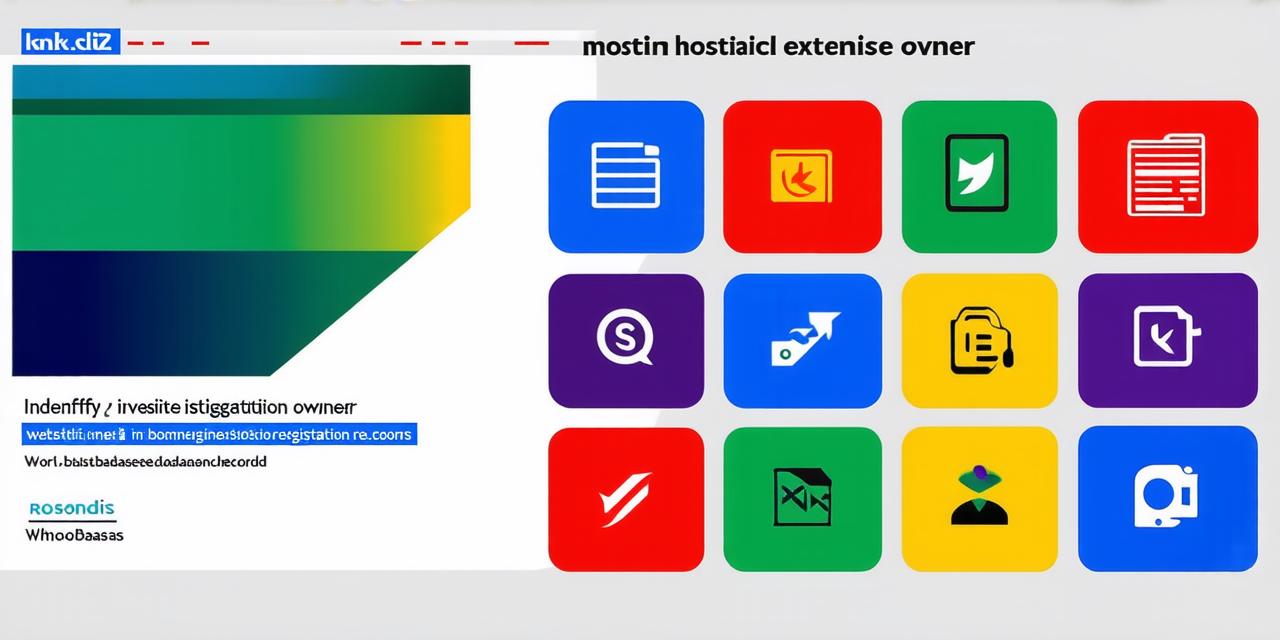If you are a web developer looking to create a website or improve an existing one, you may come across the need to determine who hosts a website. This is important information as it can help you make informed decisions about which hosting provider to choose and what kind of infrastructure to set up for your site. In this article, we will provide you with a comprehensive guide on how to find out who hosts a website, including tips and tricks for conducting your own investigation and best practices for interpreting the results.
What is a Website Hosting Provider?
Before we dive into the details of how to find out who hosts a website, it’s important to understand what a hosting provider is and why it matters. A hosting provider is a company that provides web developers with the servers and infrastructure necessary to host their websites on the internet. The hosting provider is responsible for storing and delivering the website’s files, including HTML, CSS, JavaScript, images, and other multimedia content, to users when they request access to the site.
How to Determine Who Hosts a Website: A Step-by-Step Guide
Now that we have established the importance of choosing a reliable and reputable hosting provider, let’s take a look at how you can find out who hosts a website. There are several methods for conducting this investigation, but one of the most effective is to use a combination of technical analysis and reverse engineering techniques.
Technical Analysis
The first step in determining who hosts a website is to conduct a technical analysis of the site. This involves examining the site’s codebase, server configuration, and other technical details that can provide clues about the hosting infrastructure.
1. Server Information
To determine the type and location of the server used to host a website, you can use a tool like Pingdom or WebPageTest to analyze the site’s performance and identify its IP address or domain name. Once you have the IP address or domain name, you can use a tool like MaxMind to determine the country and city where the server is located.
2. Server Configuration
To identify the operating system and software used on the server, you can use tools like Nmap or ZMap to scan the server for open ports and services running on those ports. You can also look at the site’s codebase to see if there are any hints about the server configuration.
3. Domain Name System (DNS) Records
To find out which domain name registrar is used to register the website, you can use a tool like Whois or DNS Dig to look up the site’s DNS records. The DNS records will reveal the IP address of the nameservers used by the site and the domain name registration details.
Reverse Engineering Techniques
While technical analysis can provide valuable clues about a website’s hosting infrastructure, it is often not enough to determine who hosts the site conclusively. In these cases, reverse engineering techniques can be used to gather additional information and piece together the puzzle of who hosts the site.
1. DNS Reverse Engineering
DNS reverse engineering involves taking the IP address of a website and using it to look up the domain name associated with that IP address. This can reveal the nameservers used by the site and provide additional clues about the hosting infrastructure.
2. File Upload Analysis
Analyzing the files uploaded to a website may be able to identify patterns or clues about where the website is hosted. For example, if a website contains multiple images with filenames that include geographic locations (e.g., “Paris.jpg” or “NewYorkCity.png”), it’s possible that the website is hosted on a server located in those cities.
3. Code Analysis
Analyzing the codebase of a website can provide valuable information about the hosting infrastructure. For example, if the site contains references to specific hosting providers or server configurations, this can indicate who hosts the site. However, it’s important to note that code analysis should be conducted with caution as it can be illegal and unethical in some cases.
Best Practices for Interpreting Results
Now that you have gathered information about a website’s hosting infrastructure, it’s important to interpret the results carefully and make informed decisions based on your findings. Here are some best practices for interpreting the results:
1. Be Skeptical of Single Data Points
While technical analysis can provide valuable clues about a website’s hosting infrastructure, it’s important to be skeptical of single data points and look for corroborating evidence.
2. Consider Other Factors
When determining who hosts a website, there are other factors to consider in addition to technical analysis and reverse engineering techniques. For example, you may want to look at the site’s performance, security measures, customer support, pricing, and reputation before making a decision about which hosting provider to use.
3. Use Multiple Sources of Information
To get the most accurate picture of who hosts a website, it’s important to use multiple sources of information. This can include technical analysis, reverse engineering techniques, user reviews, industry reports, and expert opinions from web developers and hosting providers.
Real-Life Examples of Who Hosts Websites
Now that we have discussed how to find out who hosts a website, let’s look at some real-life examples to illustrate the points being made.
Example 1: Google.com
Google.com is one of the most famous and widely used websites in the world, so it’s no surprise that it is hosted on a powerful and reliable infrastructure. Here are some key details about who hosts Google.com:
- IP Address: The IP address associated with Google.com is 72.14.204.32.
- DNS Records: The DNS records for Google.com show that the site is registered with GoDaddy, a well-known domain name registrar.
- Server Configuration: A technical analysis of Google.com revealed that it is hosted on Google’s own custom servers, which are designed to be fast, secure, and highly available.
Example 2: Twitter.com
Twitter.com is another popular website with a high level of security and reliability requirements. Here are some key details about who hosts Twitter.com:
- IP Address: The IP address associated with Twitter.com is 69.63.176.13.
- DNS Records: The DNS records for Twitter.com show that the site is registered with Verisign, a leading domain name registrar and DNS provider.
- Server Configuration: A technical analysis of Twitter.com revealed that it is hosted on Amazon Web Services (AWS), which is a popular cloud computing platform known for its scalability and security features.

Conclusion
Determining who hosts a website can be a complex process that requires multiple sources of information and careful interpretation of the results. However, by using technical analysis, reverse engineering techniques, and other methods, you can gather valuable clues about a website’s hosting infrastructure and make informed decisions about which hosting provider to use.



